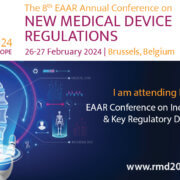The MedTech EU Forum 2024, 22 -24 May Vienna
The MedTech EU Forum Meeting starts now in Vienna. Dr. Luc Van Hove of MARACA International is excited to participate for Silimed at The MedTech EU Forum Meeting in Vienna on 22 – 24 May. This is the largest European gathering of European Medical Technology companies to discuss the current innovations in the field of medical devices and in-vitro diagnostics devices. It is a terrific opportunity to network with key people in the medical technology industry, the European Commission, Competent Authorities and Notified Bodies. All European key players will be there. The European Commission and several Competent Authorities and Notified Bodies will present their views on the current status of the MDR and IVDR implementation and what the stuck points are. How they plan to keep medical technology innovation at the forefront in Europe. A weld of topics will be discussed in parallel sessions. There is also a very interesting ask the expert track running through the meeting. This one I enjoy the most. The new HTA regulation will be discussed, as well as the new EU product liability rules. The European Innovation in Health Initiative (IHI) will be presented with case studies. The European Green Deal with its challenges and opportunities for the medtech sector will be discussed. Global clinical evidence challenges and opportunities of Real World Evidence (RWE) will be reviewed. Is real world data a game changer for the medtech industry? A very interesting topic is the transformation of postmarket surveillance with GenAI and automations.
So this is a very exciting meeting to participate in. I hope to see you there also.






